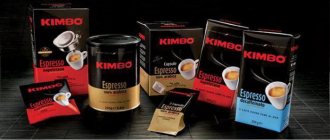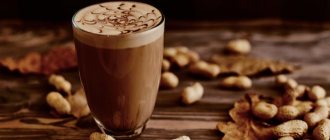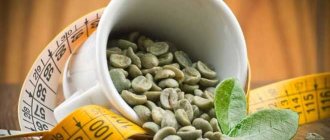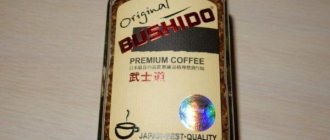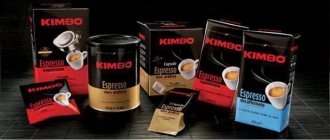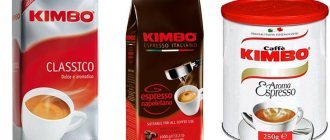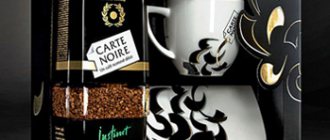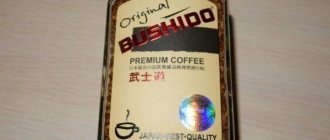Description and features
The cute animal has a slender and long body with short limbs. The musang in the photo gives the impression of being a hybrid of a cat and a ferret. The gray fur is thick, hard on top, with a soft undercoat inside.
The back is decorated with black stripes, the fur is marked with dark spots on the sides. The ears and paws are always darker; the black elongated muzzle has a characteristic white mask or white spots. Slight differences in color appear among species in different habitats.
The animal has a wide head, a narrow muzzle, with large, slightly bulging eyes, and a large nose. Small rounded ears set wide apart. A real forest musang hunter is armed with sharp teeth and claws on strong paws, which the predator hides in its pads as unnecessary, like a domestic cat. The dexterous and flexible animal is an excellent climber and lives mainly in trees.
The length of a mature musang is approximately 120 cm from the nose to the tip of the tail, the size of which is more than half a meter. The weight of an adult varies from 2.5 to 4 kg. The scientific description of the species includes the concept hermaphroditus, which was erroneously attributed to the musang because of the protruding glands in males and females that resemble the shape of the gonads of males.
Most of the time the musang lives in trees
Later they found out that the purpose of the organ is to mark the territory of home areas with secretions, or odorous contents with the smell of musk. No pronounced differences are observed between males and females.
Musang diet
The main, predominant part of the diet of Sri Lankan musangs is represented by all kinds of fruits . Predatory animals with great pleasure eat quite a large number of mangoes, coffee, pineapples, melons and bananas. Occasionally, palm martens also eat various small vertebrates, including not too large birds and snakes, as well as lizards and frogs, bats and worms. The diet of adult musangs also includes a wide variety of insects and fermented palm sap called toddy, which is why locals often call such animals toddy cats. Occasionally, animals settling near human habitation steal all kinds of poultry.
Classified as omnivores, mussangs consume a wide variety of food types, but have become famous for consuming grain from coffee plantations. Such undigested grains make it possible to obtain the most delicious and most expensive type of coffee, Kopi Luwak. When eating coffee fruits, the animals excrete them in almost undigested, pure form. However, under the influence of natural enzymes, some processes take place in the intestinal tract of the musang that significantly improve the quality characteristics of coffee beans.
Return to content
Kinds
In the Vivverov family, there are three main types of musangs based on differences in fur color:
- The Asian Musang is distinguished by pronounced black stripes on gray fur throughout the body. On the animal’s belly, the stripes turn into spots of a lighter color;
- The Sri Lankan musang is classified as a rare species with colors ranging from dark brown to reddish, from light golden to reddish-golden. Sometimes individuals appear with a faded light beige color;
- The South Indian Musang has an even brown color with slight darkening in the head, chest, paws, and tail. Some individuals are decorated with gray hair. There are different coat colors: from pale beige shades to deep brown. The tail is often marked with a yellowish or white tip.
There are much more subspecies, numbering about 30. Scientists classify some subspecies living on the islands of Indonesia, for example, Ph philippensis, as separate species.
Varietal varieties
In addition to the classic Copi Luwak, gourmets can try other varieties of the expensive drink.
Black Ivory
Black tusk is processed in the stomachs of elephants. The cost of 1 kg of grain starts at $1,080, and for a cup you will have to pay at least $50.
This variety is not available for sale; it can only be purchased in the Anantara Nature Reserve. Only a few expensive Thai hotels offer the finished drink to guests.
Elite Black Ivory coffee.
Jacques Bird
This Brazilian variety is fermented in the digestive system of Gray parrots. The living conditions of birds on farms are as close to natural as possible; there are no cages.
Freshly roasted coffee is characterized by the aroma of dried black bread with notes of molasses. There is a fruity aftertaste. The price of 1 kg of coffee starts from $430.
Brazilian variety Jacquou Bird.
Coffee Terra Nera
Palm civets are used to produce this variety. Ready, freshly roasted coffee smells of hazelnuts and cocoa. Due to the small volume of production, the cost of the product increases to $1,500 per 1 kg.
The beans are sold only in a single coffee shop in London.
Luxury products are packaged in silver paper with a flap to preserve the aroma. The pack is supplied with a 24-karat gold tag, on which the client’s name can be engraved if desired.
Lifestyle and habitat
Palm martens live in tropical and subtropical moist forests across the vast territory of Indochina and numerous islands of South Asia. In mountainous areas, the animal lives at altitudes of up to 2500 meters. The natural habitat of animals is in Malaysia, Laos, Cambodia, Vietnam, Thailand. In many places the musang animal is an introduced species. The animals acclimatized in Japan, Java, and Sulawesi.
Palm martens are active at night. During the daytime, animals sleep in hollows and on branchy forks. Palm martens live alone; only during the breeding season does communication with individuals of the opposite sex begin.
The animals are very common, appearing in parks, garden plots, and farms, where martens are attracted to fruit trees. If a person treats forest guests peacefully, then musangs inhabit stables, roofs, and attics of houses.
In some countries, musangs are kept as pets.
They reveal their appearance by being active at night, which often irritates their owners. In houses where musangs live as pets, there are no rats or mice, with which representatives of civets deal brilliantly. In relation to their owners, palm martens are affectionate, good-natured, and flexible.
Popular cats
One of the main dangers for any domestic bird is cats. But among them there are such attractive specimens that even the owner of the parrot will not be able to resist. For example, if you buy a caracal, you can proudly tell your friends about the presence of a small tame leopard in your house. And get a proud, but unusually adorable pet, capable of even taking on the role of “guard” of the premises. After all, in appearance the caracal is very similar to a growing leopard. The serval deserves the same close and respectful attention. It is believed that few people can buy a serval or “bush cat”. Its proper maintenance is a prestigious and expensive endeavor. That’s right, such outrageous pets require special care. In return, they can give the owner the most unusual feeling for a cat - fidelity. A dog's devotion combined with a cat's grace is an extremely unusual cocktail. By the way, about liquids: the serval and caracal are not only not afraid of water, but they themselves regularly visit places for swimming with pleasure. These are not only beautiful, but also extremely clean animals. You can also find a worthy friend if you buy a Canadian wolf. We offer real Canadian black wolves with all documents. You get a domestic tame wolf, which is the standard of obedience, loyalty and wisdom.
Nutrition
Predatory animals are omnivores - their diet includes both animal and plant foods. Malayan forest dwellers hunt small birds, destroy nests, catch insects, larvae, worms, and small rodents from the squirrel family.
Palm martens love to eat sweet plant fruits and various fruits. Animals have been noted to have a predilection for fermented palm sap. Local residents are also familiar with this taste - Toddy wine, similar to liqueur, is made from the juice. In captivity, pets are fed meat, chicken eggs, low-fat cottage cheese, a variety of vegetables and fruits.
The main food craving for which musangs have become famous is the fruit of the coffee tree. Animals, despite their love for coffee beans, are selective. The animals feast on only the ripest fruits.
In addition to coffee beans, musangs love to eat sweet tree fruits.
Unique physiology requires a special approach
Animals that have been domesticated for a long time are very different from the exotic pets that have become popular today, which often end up in enclosures straight from the wild. This is stressful for any of them, so their offspring usually end up on the shelves of pet stores. But this does not change the main rule - each unusual animal requires a unique approach to housing and feeding conditions. Many common pets can safely eat food from their owner's table. Some exotic species are also capable of this. For example, monkeys, which are safe to give a certain set of fruits. But to maintain good health, special feed is needed. They are inexpensive and allow you to maintain good health for your pet.
Reproduction and lifespan
The Musang animal leads a solitary lifestyle, meeting with individuals of a different sex 1-2 times a year only for reproduction. Young palm martens reach sexual maturity at 11-12 months. The peak birth rate in the subtropics occurs from October to December. In the tropical zone, reproduction continues year-round.
Mating of animals occurs on tree branches. Males and females do not stay together for long. The worries of bearing and raising offspring lie entirely with the musang mothers. Gestation lasts 86-90 days, in some species 60 days, in a litter of 2-5 cubs, each of which is born weighing approximately 90 g.
Before the babies appear, the female prepares a special nest for herself in a deep hollow. The mother feeds newborn babies with milk for up to two months, later the female teaches the babies to hunt and get their own food, but gradually feeds the offspring.
Pictured is a baby musang
In some species, the period of feeding on milk extends to up to a year. In general, attachment to the mother sometimes lasts up to a year and a half, until young musangs gain confidence in obtaining food during night forays.
Later they go in search of their own habitats. The lifespan of animals in the natural environment is 7-10 years. Pets in captivity, if well cared for, live up to 20-25 years.
In the Red Book, the common musang subspecies P. hermaphroditus lignicolor is listed as a vulnerable species. One of the reasons is the constant hunting of animals due to their food addiction to coffee beans and fermentation, thanks to which they obtain a drink of rare quality.
Luwak coffee options
You can prepare it in several different ways.
Pure coffee
Can be prepared according to the standard recipe:
- Ground grains are placed in a heated pot.
- Next, they are filled with water and placed on low heat.
- Do not bring to a boil. When foam appears, remove from heat and wait for it to subside, then return to heat.
- Repeat this procedure several times.
- Pour the drink into a warm cup.
With condensed milk
To do this you will need condensed milk, a press and a cup. Pour one or two teaspoons of condensed milk into a cup, then place a special filter over the cup and press it with a press. Pour boiling water little by little.
This is the traditional way of making Vietnamese coffee.
